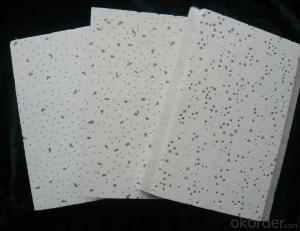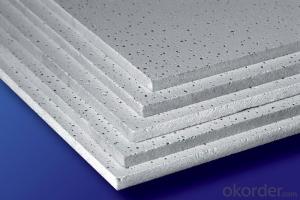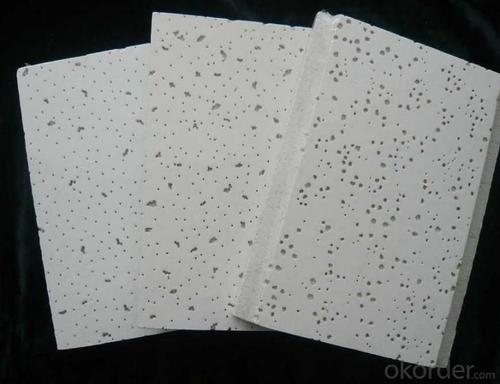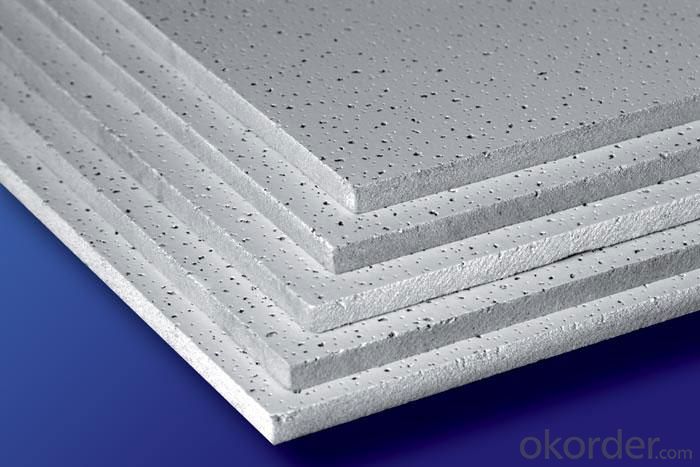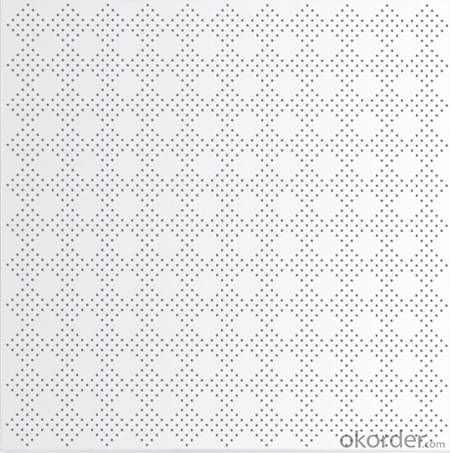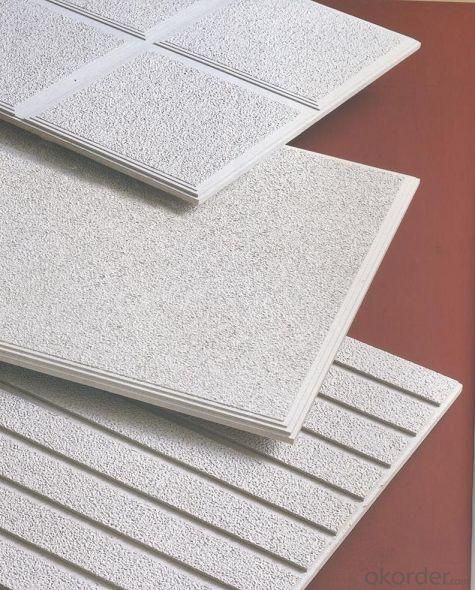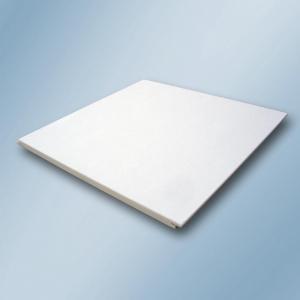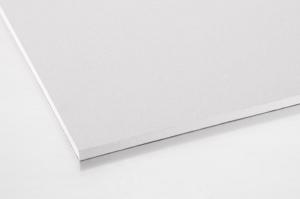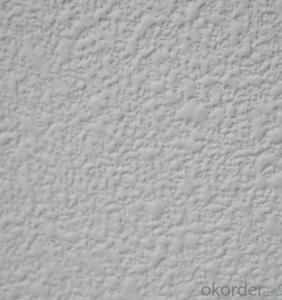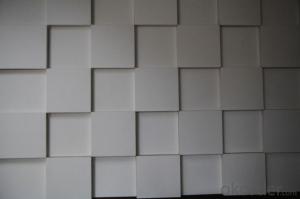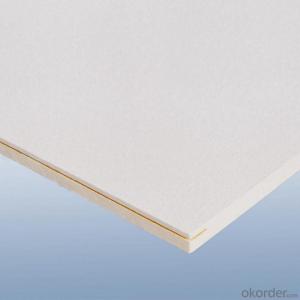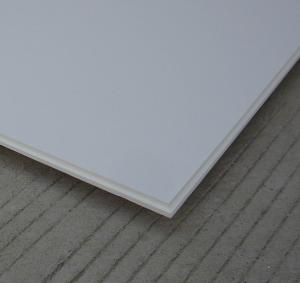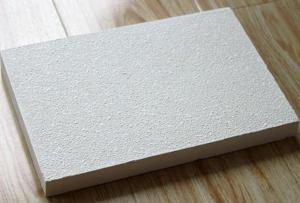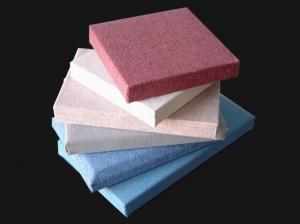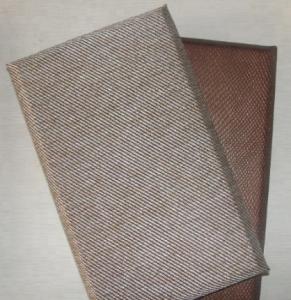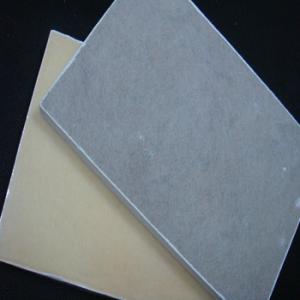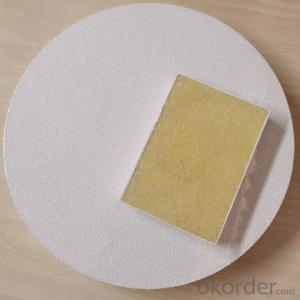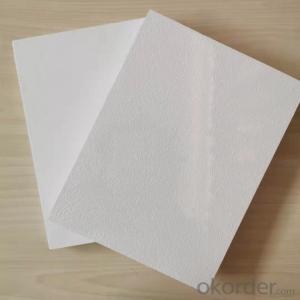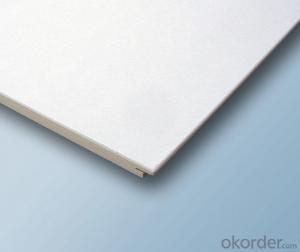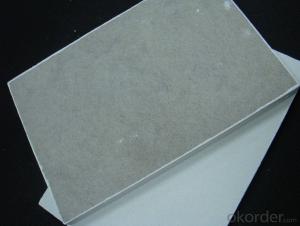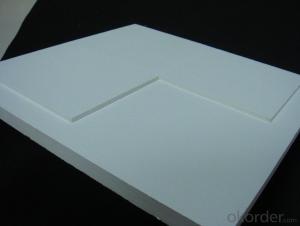Fiberglass Wall Panels Ceiling Acoustic Fabric Panel
- Loading Port:
- Shanghai
- Payment Terms:
- TT or LC
- Min Order Qty:
- 10000 m²
- Supply Capability:
- 300000 m²/month
OKorder Service Pledge
OKorder Financial Service
You Might Also Like
fiberglass ceiling is made from sound absorbing plate of fiberglass wool/Rock wool as basis material and on it compound sprayed fiberglass decorative felt. It features good sound absorbing effect, heat preservation, high fire retardant, high strength level , beautiful decorative effect, etc. it can improve acoustical environment of building and raise peoples quality of work and living. It is widely used for indoor space where not only has the requirement to drop noise but also the needs medium and high quality decoration, such as hospital, meeting room, exhibition hall, cinema, library ,studio, gymnasium , phonetic classroom, shopping place ,etc.
Product Applications:
The panels are udes widely in schools, offices, music studios, lecture theatres,
multi purpose halls, interview rooms, training areas and cinemas. They meet the
requirements of BB93 of Building Regulations for acoustics in school buildings and
are Class O fire rated hence meeting the Fire Regulations as well.
Product Advantages:
Saves headroom space because exceptional noise absorption effectiveness is achieved by low (30mm) material thickness.
Surfaces can be emulsion painted to any colour without significant loss in noise
absorption. Increase savings due to fast and easy installation.Lightweight and therefore are ideal for adhering to ceilings, which do not have a very high load bearing capabilities.
Meets BB93 standards for school acoustics as well as common areas in flats for Building
Regulations.
Reinforced edges for increased durability.
Main Product Features:
Material: Torrefaction Compounded high density fiberglass wool
Face: Special painting laminated with decorative fiberglass tissue
Color: white, black and others to order
Fire-resistant: class A, non combustible
NRC: 0.9-1.0, excellent sound absorption
Thermal-resistant: >0.4 (m2k/w)
Humidity: Dimensionally stable with RH up to 95% at 40c, no sagging, wrapping, or delaminating
Moisture rete:<1% (JC/T670-2005)
Enviromental impact: Tiles and packing are fully recyclable
Product Specifications:
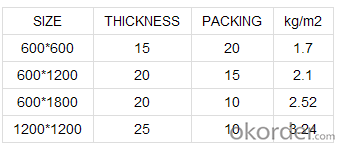
FAQ:
1)Q:Are you a factory or trading company?
A: We are a factory.
2)Q: I am interested in the products but I do not have experience
A: Tell us your budget and target market and we will give you professional advice of exact kinds and quantity.
3)Q: How can I get some samples?
A: We are honored to offer you samples.
4)Q:How does your factory do regarding quality control?
A: Quality is priority, we always attach great importance to quality controlling from every worker to
the very end.
Images:
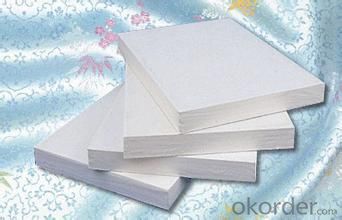
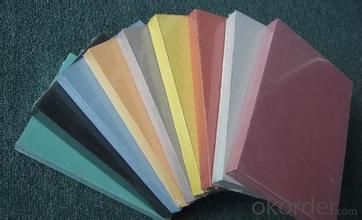

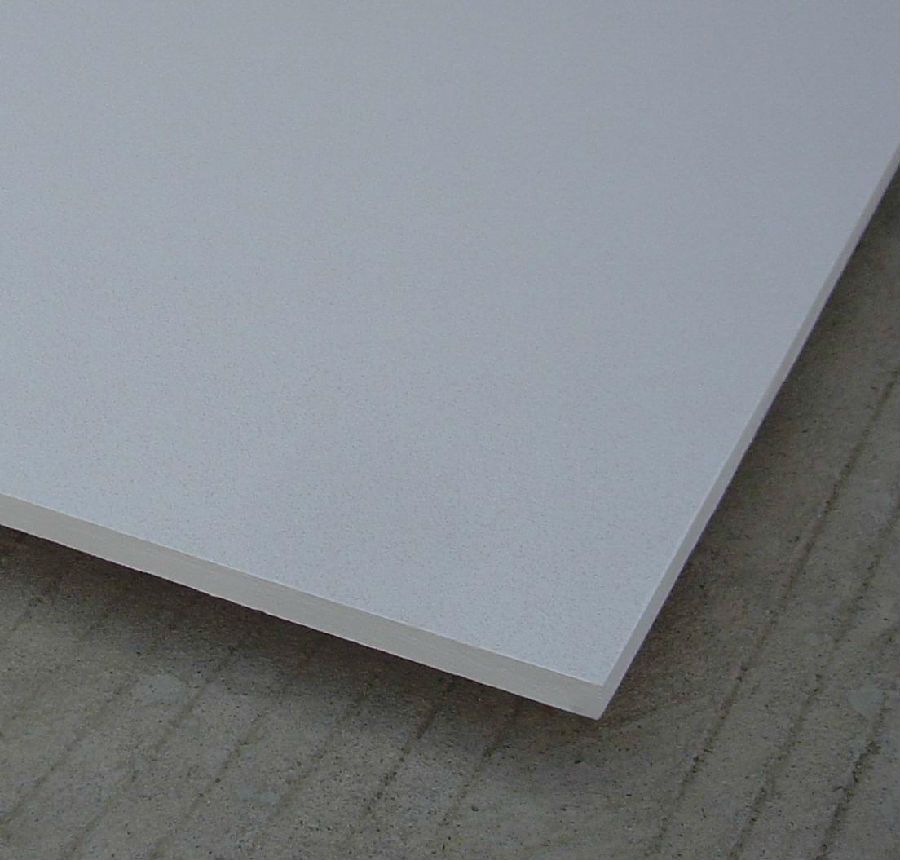
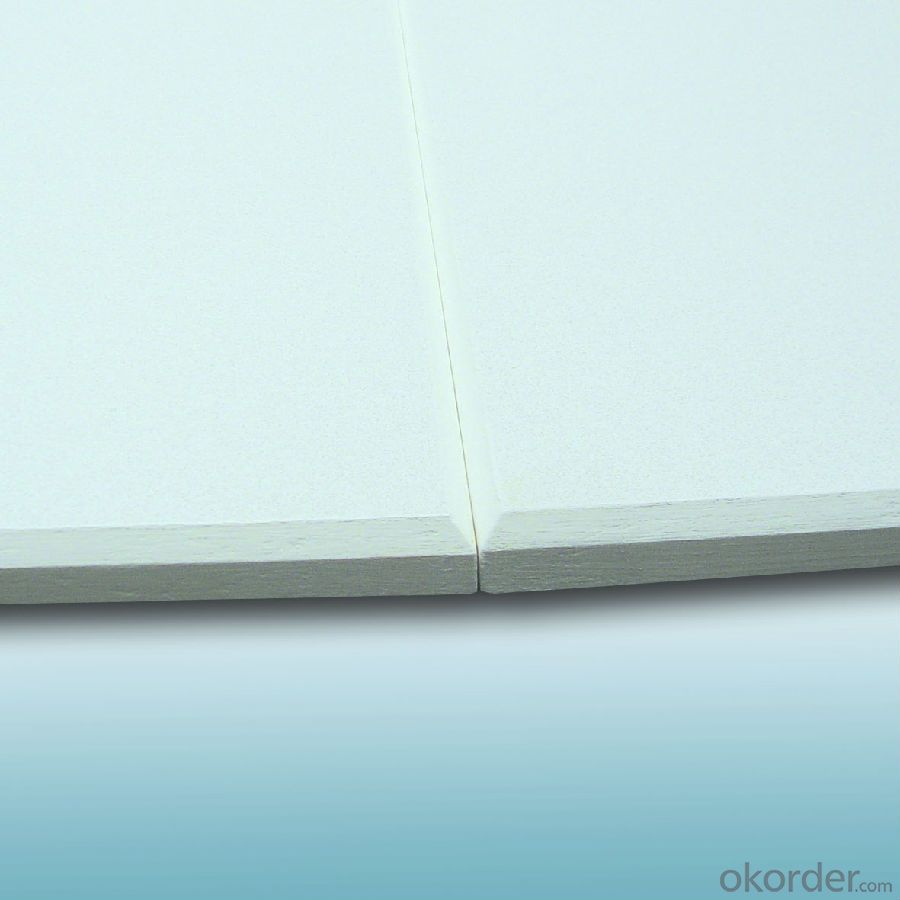
- Q: I had my house re roofed last year and the roof leaked into a large utility room. I took the drop ceiling out and took down the ceiling panels above it and now I have to replace the insulation and put a ceiling back in. Its a very high celing unless I replace the drop ceiling panels here. Any suggestions? What kind of insulation should I use? I noticed some of the insulation has different numbers and some of it is very expensive so how do I know what to use?
- go to lowe's or home depot, someone there will help you with ur problem at no cost. ps. ask for johns manville insulation, it is the best.
- Q: Gypsum board plus alkali-free glass fiber benefits
- Waterproof paper gypsum board: its core and face paper are subject to water treatment, according to the national standard requirements, water-resistant plaster board and board core must meet a certain degree of water requirements (surface water absorption of not more than 160 grams , Water absorption of not more than 10%). Waterproof paper gypsum board for continuous relative humidity of not more than 95% of the use of places, such as bathroom, bathroom and so on.
- Q: What are the textile mill floor materials?
- Please do the epoxy resin is good, the price is relatively high, because we designated the Secretary Deng card, before always do bad, the results of the people of Hong Kong, really useful, the construction is not Secretary Dengde, a technician To guide over.
- Q: I have a partially finished basement, hardwood floors above. What can I do soundproof the unfinished ceiling? I'm not planning on finishing, I want that area to serve as a hang out spot for the family and I don't want to worry about fiberglass dust.
- You need to insulate. then poly to seal! -- Or-- you can buy insulation batts already prewrapped in plastic. Or have it sprayed with foam, it`s expensive!--- YES-- fibreglass does make dust! Wear a mask!-- Once this is done, an inexpensive fabric draped across with a billowing effect looks good, and easy to DIY.
- Q: Cast-in-place floor (ceiling position) Reinforcement protective layer is not enough, local steel exposed. I intend to use epoxy resin mortar
- I have dealt with a variety of cracks blocked, fill, closed. And epoxy mortar of the prestressed anchor head and structural reinforcement. Specification of epoxy coated steel bars, the anchorage length should be increased, the correction factor is 1.25 see GB50010-2017. Can be seen that the surface is more smooth and easy to erosion.
- Q: Waterproof acceptance how to accept kitchen and toilet waterproof is done?
- That white is off the water test is like to give you a basin, so you see it leak leak, is not broken, you have to go inside the basin with water inspection, but should pay attention to the length of the test, some things are not all of a sudden Can be seen, such as the house of leakage
- Q: What is the use of sisal?
- At present, the fiber composite composites were prepared by blending sisal fiber and glass fiber with phenolic resin, and the mechanical properties such as bending strength, flexural modulus, no notched impact strength, electrical properties and water immersion property were found. Positive mixing effect, low water absorption performance, no significant impact on electrical performance. Is a new industrial composite materials, high strength, wear resistance, comprehensive performance is better.
- Q: We just bought a house and our ceiling has the cottage cheese texture to it and it is cracked and broken in many placed so my husband wants to just take it off. I have told him that it may contain asbestos but he thinks he can do it on his own. So we are going to get it tested and if it does he just wants to remove it himself. My question is, is this a job anyone can do?
- He wants to what?? Id get his head read, this stuff is extremely dangerous material. It may take 20 yrs to develop cancer, But its a bit late then to say Gee I wish I had done it properley If it is asbestos Its better to pay the experts to do a proper job, maybe expensive but I think is prefferable to an early funeral, maybe yours!!!!!
- Q: You would have chosen to join the huts?
- Wooden houses in Europe and the United States is very popular, especially in North America, wood structure building system since 1830 has dominated. Each year, more than 90% of the new 1.5 million to 2 million houses in North America use wooden structural systems. Which lasted for centuries, the wooden structure of the building with its a series of superior characteristics, so that residents living in North America enjoy the world's highest standards of housing.
- Q: What is the relationship between the two? Or who is engaged in the electronics industry, can give me talk about the industry's industrial chain and technical process? Thank you.
- The concept of glass is generally hard and fragile objects, and is not suitable as a structural material, but if it is made of silk, its strength is greatly increased and has a softness, so with the shape of the resin can finally become a good structural material. Glass fiber with its diameter smaller its strength increased. As a reinforcing fiber glass fiber has the following characteristics, these features make the use of glass fiber far more than other types of fiber to a wide range of development speed is also far ahead of its characteristics are listed below: ?? (1) high tensile strength, elongation is small (3%). ?? (2) high elasticity coefficient, good rigidity. ?? (3) elastic limit within the large elongation and high tensile strength, so the absorption of large impact energy. ?? (4) for the inorganic fiber, with non-flammable, good chemical resistance. ?? (5) water absorption is small. ?? (6) scale stability, heat resistance are good. ?? (7) good processing, can be made into stocks, beams, carpets, weaving, and other different forms of products. ?? (8) transparent through the light. ?? (9) with a resin having a good adhesion to the surface treatment agent. ?? (10) cheap.
Send your message to us
Fiberglass Wall Panels Ceiling Acoustic Fabric Panel
- Loading Port:
- Shanghai
- Payment Terms:
- TT or LC
- Min Order Qty:
- 10000 m²
- Supply Capability:
- 300000 m²/month
OKorder Service Pledge
OKorder Financial Service
Similar products
Hot products
Hot Searches
Related keywords
